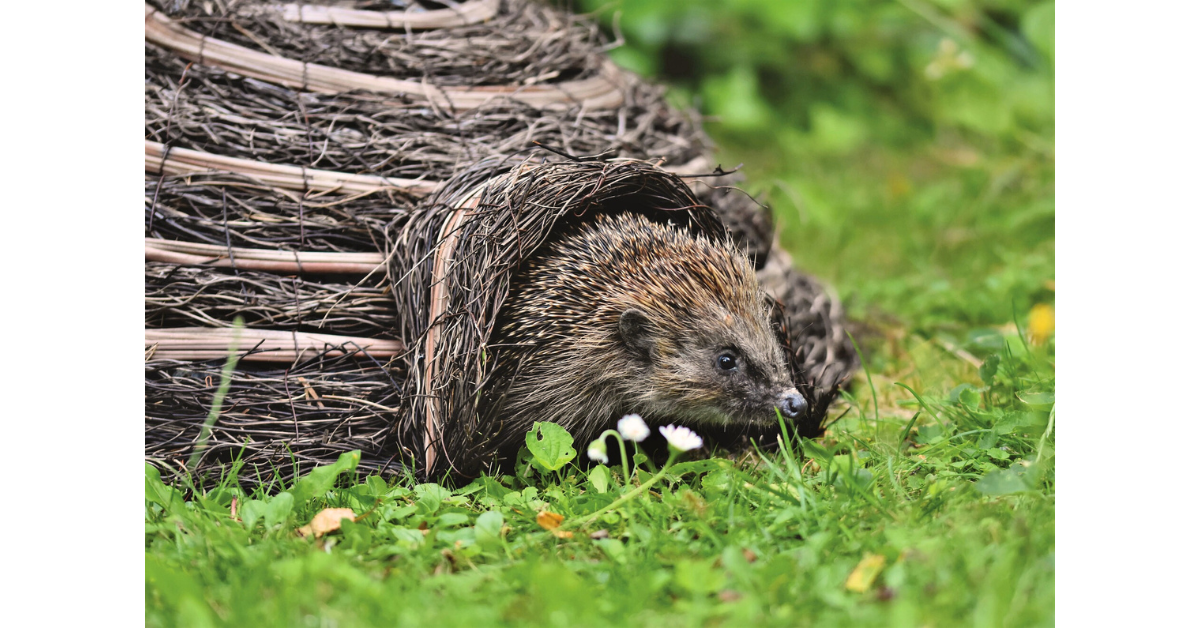Helping Wildlife and Your Allotment Thrive This Winter
Winter can be a challenging time for wildlife, but your allotment can become a haven for birds, insects, and small mammals, while also boosting your gardening success.

Supporting wildlife doesn’t just help the environment—it benefits your allotment by improving pollination, reducing pests, and creating a balanced ecosystem. Here’s how you can make your allotment wildlife-friendly this winter.
Why Help Wildlife on Your Allotment?
Helping wildlife isn’t just about being kind to nature—it’s about creating a thriving, self-sustaining environment that benefits your crops, your enjoyment of the allotment, and the planet as a whole. Here’s a closer look at the many reasons why supporting wildlife is essential for you and your allotment:
1. Better Pollination
Pollinators like bees, butterflies, hoverflies, and even moths play a critical role in the growth of fruit and vegetables. Without their help, many crops—such as strawberries, beans, apples, and courgettes—would struggle to develop. By attracting pollinators, you can increase the quality and quantity of your harvest. A wildlife-friendly allotment ensures these important creatures stick around when your crops need them most.
2. Natural Pest Control
While slugs, snails, and aphids are often the bane of gardeners, inviting their natural predators to your allotment can save you the hassle of dealing with them yourself. Frogs, hedgehogs, birds, and beneficial insects like ladybirds and beetles can reduce pest populations dramatically. Encouraging these creatures not only keeps your crops healthy but also minimizes the need for harmful pesticides that can damage your soil and plants.
3. A Balanced Ecosystem
Creating a space where plants, insects, birds, and small mammals coexist harmoniously helps maintain a natural balance. When predators and prey work together, you’re less likely to face overwhelming infestations or crop failure. This interconnected system ensures that your allotment thrives with minimal human intervention, saving you time and effort.
4. Healthy Ecosystems for a Healthier Planet
A thriving allotment doesn’t just support you—it supports the planet. Healthy ecosystems provide critical functions such as:
Pollination : Essential for growing crops and maintaining biodiversity.
Water Purification: Plants and soil filter rainwater naturally, reducing pollutants.
Carbon Sequestration: Vegetation captures carbon dioxide from the atmosphere, helping combat climate change.
By encouraging wildlife to manage pests naturally, you can significantly reduce the need for synthetic pesticides and fertilizers. Chemicals can harm the very creatures that benefit your allotment, like bees and worms, and may disrupt soil health. A wildlife-friendly allotment takes a more sustainable, eco-conscious approach, benefiting both nature and your crops.
6. Enhanced Enjoyment of Your Allotment
A buzzing, lively allotment filled with birdsong, colourful butterflies, and bustling insects isn’t just productive—it’s a joy to spend time in. Watching wildlife interact with your space can bring a sense of peace, accomplishment, and connection to nature, making your allotment a place to relax and recharge as well as grow food.
7. Long-Term Productivity
Wildlife doesn’t just benefit your crops for a single season—it builds the foundation for long-term success. Healthy soil enriched by worms, balanced pest populations, and thriving pollinator habitats ensure that your allotment remains productive year after year.
Building Biodiversity into our Allotments
How to Support Wildlife on Your Allotment This Winter
- Build minibeast hotels using logs, twigs, and leaves to shelter insects.
- Create hedgehog homes with wood or overgrown areas.
- Maintain hedgerows and grassy areas , ensuring they aren’t disturbed during nesting season.
- Install a pond -even a small one! Frogs, toads, and newts will use it to breed and help with pest control.
- Add a shallow dish of water for birds and small mammals, ensuring it doesn’t freeze over.
- Hang bird feeders with seeds, suet, and nuts.
- Install bird boxes to offer warm shelter. Birds will repay the favor by eating pests and controlling weeds come spring.
- Include nectar-rich flowers that bloom in early, mid, and late seasons. Lavender, alliums, heathers, and herbs like sage and oregano are excellent choices.
- Add night-scented plants to attract moths and other nighttime pollinators.
Swap pesticides for companion planting companion planting to naturally deter pests. For example, marigolds can repel aphids, while dill attracts beneficial insects like ladybirds.
6. Leave Some Areas Untouched
Resist the urge to tidy everything! Leave piles of leaves, overgrown corners, or woodpiles for hibernating creatures and insects.
Who Benefits?
Bees & Butterflies: Vital pollinators for fruit and vegetable plants.
Hedgehogs & Frogs: Natural predators of slugs, snails, and other pests.
Ladybirds, Beetles & Dragonflies: Pest controllers that feast on harmful larvae and aphids.
Birds: Help control rodents, insects, and weeds while also aiding pollination.
Helping wildlife isn’t just a nice thing to do—it’s a smart, sustainable strategy that makes your allotment healthier, more productive, and a true haven for both plants and creatures. By fostering biodiversity, you’re not only improving your own harvest but also playing a vital role in protecting the environment for future generations.🐝🦔


